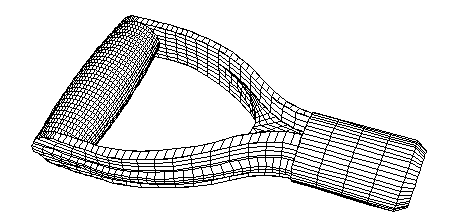
You need good leverage; the right grip, well-designed and durably constructed, delivers just that. Seek a comfortable fit for your hand and peer closely at the rivets that attach the handle to be sure they’re neatly installed and flush. You’ll likely see the classic D-handle most often, usually made of durable but lightweight plastic (which can and does crack or break down over the years due to use and exposure to sunlight, though you can certainly get many good years out of it). A good handle is easy and comfortable to hang onto, especially during twisting and lifting motions. A variation on the D-handle is the so-called YD handle, which is longer and potentially sturdier. The two sides of the handle converge in a Y, and a crosspiece of wood (usually metal-reinforced) joins them. This design has the advantage of dissipating twisting forces.
Last but not least is the T-handle, which is excellent for two-handed pushing work, such as in the shallow-angled spades that gardeners use to edge planting beds or peel off turf or topsoil. The drawback is that the impact of your digging travels straight into your wrist, so look for a coated handle or wear gloves to alleviate the shock, at least somewhat.

No comments:
Post a Comment